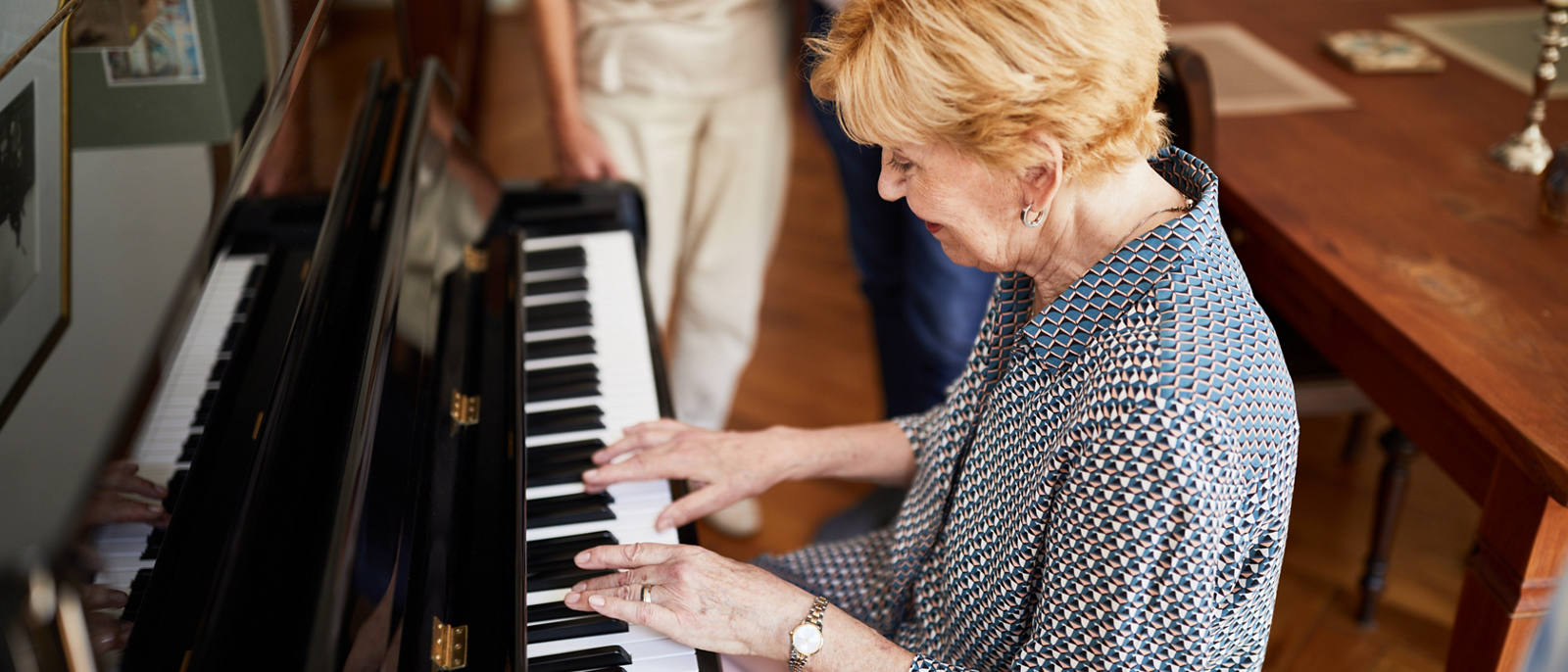Ageing skin: how it can be delayed

Skin ageing is a natural process that cannot be avoided. But we can influence how quickly the skin ages. The most important thing is to protect the skin from UV rays, starting from an early age.
Healthy skin
A fresh, young-looking and wrinkle-free skin is the idea of beauty. Each and everyone of us has wished we could hold on to this for ever. But this is, of course, unrealistic. “Skin ageing is part of life,” says Zurich dermatologist Severin Läuchli. However, what we can do is minimise the skin’s exposure to harmful influences.
Weshalb die Haut altert
Like all other organs, the skin, our largest organ, is subject to natural ageing. This starts between the ages of 20 and 30, but is not yet visible. At around the mid-30s, the first traces of ageing appear in the form of fine lines. Processes in the sclera (dermis) are responsible for this. The sclera is made up of connective tissue fibres, collagen and elastin, which ensure that the skin is both stable and elastic. However, as time passes, these fibres deteriorate – all of which is a natural process. At the same time, the subcutaneous fatty tissue also becomes thinner.
The symptoms of ageing skin
What was initially negligible gradually becomes more apparent over time, with the fine lines developing into wrinkles. On top of this, activity in the sebaceous glands decreases with age. This explains why the skin dries out more quickly – in contrast to our younger years, when a sebum film ensures that the skin remains supple and moisturised. Older muscles are also less well-toned, which can be another reason why facial lines develop: between the eyebrows or around the mouth, for example.
How age spots develop
Older people typically have thinner, more brittle and wrinkled skin. Other signs of ageing include age spots, called lentigo senilis or lentigo solaris. Like moles or freckles, these are caused by pigment accumulations in the epidermis and are the result of many years of excessive exposure to UV rays. This is why age spots appear mainly on the face, but also on other areas of the body exposed to the sun, such as the décolleté, the back of the hands and the arms. People over 60 years of age are particularly prone, but the spots can sometimes appear even earlier.
The difference between age spots and age warts
Also typical of old age are age warts (seborrheic keratosis). While similar to age spots, they have an important distinguishing feature: age warts are slightly raised and can appear all over the body. Mostly genetically inherited, they are always harmless and benign. Age spots, on the other hand, can indicate a form of melanoma.
It is therefore important:
- to keep an eye on age spots using the ABCD rule.
- Anyone thinking of having age spots removed should first have a dermatologist examine them to rule out the possibility of skin cancer.
How to treat age spots
Some people try natural bleaching agents such as primrose or watercress extract. But caution is advised as these products can trigger intolerances and skin irritations. Other treatment methods include fruit acid peelings, which peel off the top layer of skin. Laser procedures which destroy the dark pigments are particularly efficient. In any case, it is best to seek medical advice beforehand to find out which form of treatment is suitable and what care should be taken afterwards. After peelings and laser work, it takes a good two weeks until the skin has completely healed.
How to avoid age spots
The general rule is: the more often fair skin is exposed to the sun, the higher the likelihood of age spots developing in later life. This can be avoided by ensuring sufficient protection from the sun from an early age.
What accelerates skin ageing
Here too, a sensible amount of sun exposure makes all the difference: "UV light is very aggressive in the way it destroys the elastic fibres in the skin," says Severin Läuchli. People who have been exposed to a lot of radiation develop the same wrinkles 10 years earlier than those who have consistently protected themselves, he says. And, once damaged, skin hardly ever recovers. Even special cosmetics, such as those containing vitamin A acid, can at best only slightly reduce the appearance of wrinkles. It is therefore advisable to:
- avoid direct sunlight
- apply sunscreen
- forget solariums. The rays from the solarium’s tubes also make the skin look old prematurely.
How to prevent premature wrinkles
A healthy lifestyle can help: no smoking, sufficient sleep and exercise, alcohol in moderation, and eating a balanced diet. Severin Läuchli: "There is evidence that high-calorie, sugary food leads to increased inflammatory processes in the body, which promote skin ageing." On the other hand, antioxidants from certain foods such as fruits, vegetables or nuts can have a protective effect against free radicals, which contribute to the skin ageing process.


